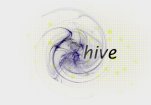Artificial Life Environment

alien is the shortform of artificial life environment and stands for a software model aimed to simulate artificial life forms or more generally self-organizing systems. It is inspired by cellular automata ideas but uses a more physical approach. The following two key concepts are brought into play:
Firstly, a physical framework controls the dynamic of elementary entities (called the cells). They are able to move across the discrete space and can perform actions (e.g. calculation or motion instructions) triggered by tokens (see below). Since cells may possess sticky boundaries, they can accumulate to arbitrary large clusters which operates as one entity. Besides the motion engine based on classical mechanics, cells have energy values. They constantly emit energy particles to the environment as a consequence. When cells lose a critical amount of energy they will be transformed into energy particles and forfeit all cell functions. On the other side, energy particles can be absorbed by normal cells.
The second idea uses token to execute cell functions in a controlled manner. Every single cell has a specific function which will be executed by passing tokens. A token, initially generated on an acceptor cell from an absorbed energy particle, saves the result in its state and spreads to all adjacent connected cells. In this way, cell clusters are implementations of (massive) parallel algorithms.
The philosophy behind alien
The alien model was designed to have no built-in definition of what has to be a living structure, a passive landscape element, a nutriment, a neuronal network etc. All these profound entities - regardless of their diversity, complexity or multi-faceted qualities - are formed by the same artificial chemistry (the cells).
According to this principle, every structure can be transformed into everything else only by arranging the fitting cells.
The goals
The first goal is the creation of controlled self-template-replicating structures working under competitive environments (in alien). Such discovery would be a major milestone toward the studying of alien evolution without GAs.
Further goals direct to more non-trivial replication forms, for instance organisms with digital DNA in their cells. As von Neumann has pointed out, this form of artificial reproduction allows (theoretically) unbounded sophistication in evolutionary processes.
Development
"alien0" is a first concrete implementation of alien (an alpha version is still available). The primary task is to give a notion of the model and some basic tools for studying evolutionary processes via genetic algorithm (GA). It uses a rather minimalistic instruction set (see documentation) for the cells in the simulations.
"alien world" is in a very early development stage and will be the next step in progression. With much more powerful tools and a more flexible software design, it will allow large-scale open-ended simulations, elaborately manipulate populations and utilize GAs with user-defined genetic operators combined with genetic drift and flow methods.
Hall of fame (of digital organisms)
This section is dedicated to some remarkable alien0-structures which were evolved by GAs. The first number in the names of the list below indicates the individual's size while the second one stands for the appropriate universe density. If the organism is coded without overlapping cells a letter w (otherwise an o) is appended. You can download the genome code (loadable in alien0-editor) or watching a video showing how the individual operates in a population.
Publications
[1] Heinemann, C.:
Artificial Life Environment. In: Informatik-Spektrum, 31(1): pp. 55-61, 2008.


